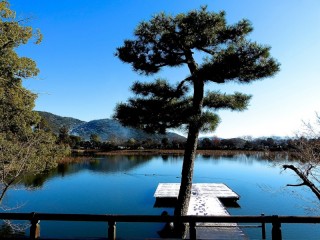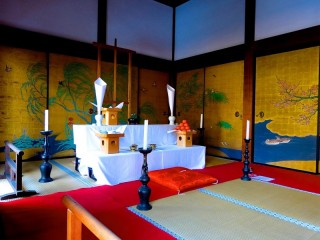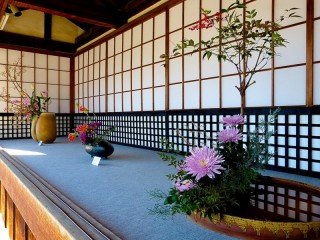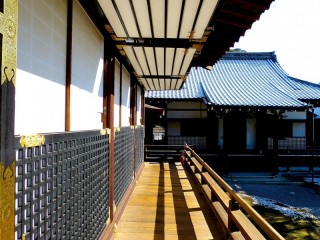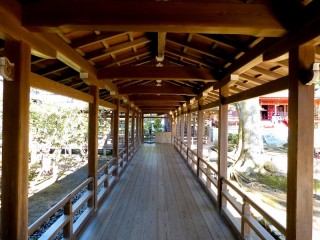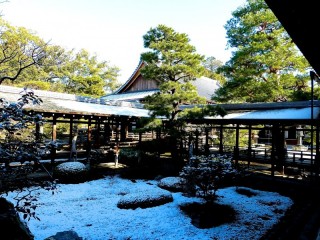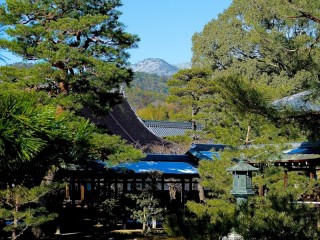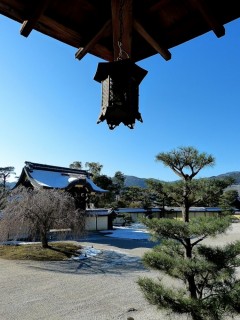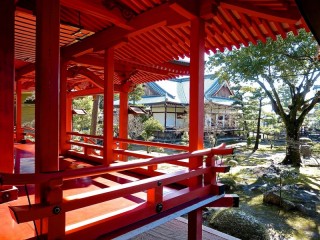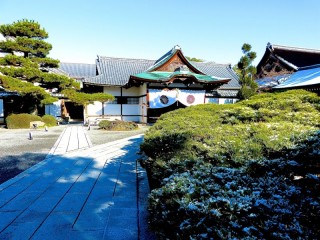Loading
Search
▼ Kyoto Daikaku-ji Temple
- Category:Shrine and Temple
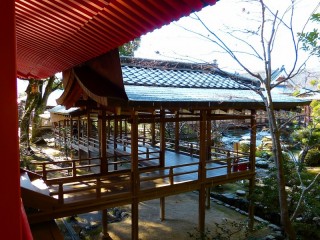
JAPAN TRAVEL
Enjoy these temples with amazing outside corridors – 2
Daikaku-ji Temple, located in the northwest suburbs of Kyoto, contains the same design elements of the ancient Imperial Palace. The ground design and building arrangements are noble and elegant, its gardens are refined, and most of all, a labyrinth of long wooden corridors connecting all of its halls is amazing.The temple used to be an Imperial
Villa for Emperor Saga (786-842). It was converted into a temple in 876. Since then, and basically all the way to just before the start of the Meiji Restoration (1868), a member of the Imperial Family always served as its head priest.
Strolling Route Before you enter the entrance of the building, take a look at the outdoor flower display on the left. These are Ikebana. They are on display because Daikaku-ji Temple is also the head school of the Sagagoryu school of Ikebana. After you enter the building, your excursion through a series of long wooden corridors begins. As you follow the route guides, you will walk by two typical noble style buildings, called Shinden-zukuri and Shoin-zukuri. Both were used by emperors or high level nobles. Then the corridor bends a few times around the perimeter of a big dry garden and leads you Godai-do Hall.
This hall has a wide wooden terrace facing a beautiful man-made pond, Osawa-no-ike Pond. The view from this open terrace is really great. Now we have finished the front half of the corridor route. After Godai-do Hall, we will move on to the back half. The route guides you through a museum, scripture house (Chokufushingyo-den Hall), and a brilliant red hall dedicated to Amitabha Buddha. These buildings surround an inner garden containing a stream and trees. The corridors connecting the buildings bend and crook many times. When I was there, I often saw people walking along faraway corridors on the opposite side of the temple complex; it was quite difficult to know where I would be going next. Very exciting!
Emperor Saga and Priest Kukai
Emperor Saga was a son of Emperor Kanmu (737-806) who established Kyoto as the new capital of Japan in 794. Saga was enthroned in 809 during severe famines and a plague. He asked advice from Priest Kukai (774-835) who had come back to Japan after becoming a certificated Shingon esoteric Buddhist Master in Tang (old China, 618-690, 705-907). Kukai suggested a few 'cures' including the writing out of the Great Heart of Wisdom Sutra (Hannya-shingyo). And so Saga put his heart into it, writing with golden powder, following a “one character three bows” ritual on special dark blue paper. The plague soon stopped. Saga’s handwritten sutras have been stored in the scripture house.
In addition to the being Japan's highest level priest ever, Kukai was also known as one of the top three calligraphers of the period. Saga was another. They were both highly cultured and had a deeply satisfying time together here at the former villa. In 816 Saga gave Kukai official permission to establish a temple on Mt. Koya-san, and in 823 asked him to become responsible for To-ji Temple.
About this series
Japan's Heian Period (794-1185) was an age of aristocracy. Their refined taste found its way into the design of temple buildings and gardens. The buildings often had no walls, but instead latticed shutters or sliding doors all around. When the shutters or doors were completely opened, the inside of the rooms became a part of the outside world. Outside roofed corridors connecting each building were also a place where they could touch nature, enjoy the gardens, and breathe and feel fresh air, yet be protected from rain, snow and strong sunshine. Noblemen really enjoyed the seasonal change of the gardens, and the comfortable touch of the wood of these impressive outside corridors. The temples covered in this series (see below) were all established in the Heian Period, and are admired for the arrangement of their beautiful corridors. I hope you enjoy them as much as I did!
1 Eikan-do Temple (established in 853): Excursion through a collection of vertical corridors, leading up to higher levels
2 Daikaku-ji Temple (established in 876): Excursion through a labyrinth of long horizontal corridors
3 Ninna-ji Temple (established in 888): Zigzag corridors connecting sand and pond gardens
4 Shoren-in Temple (established in 1150): Horseshoe corridors facing three gardens If you enjoyed this series, you might also like my Prominent Garden Designers. This series introduces five famous Kyoto gardens.
If you're interested to book a dinner at Daikaku-ji temple, please visit this page : http://www.veltra.com/en/asia/japan/kyoto/a/124881?sid=1091
By Tomoko Kamishima
- September 24, 2016
- Comment (0)
- Trackback(0)


